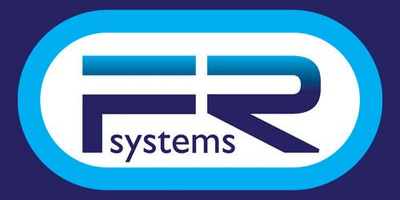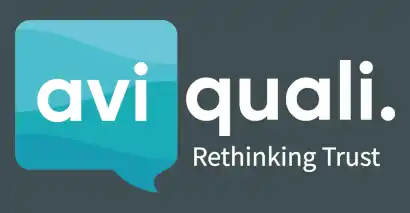Major Sales Events and Traffic
Major sales events like Black Friday, Cyber Monday, or seasonal promotions are prime opportunities for growth—but they also bring the challenge of handling massive traffic. During these high-stakes periods, websites crash more frequently due to the sudden influx of eager shoppers. For site owners, the key to success lies in preparation and foresight.
To prevent website crashes during major sales events, it’s essential to ensure your website’s infrastructure is robust and scalable. Partnering with a reliable hosting provider that can quickly scale resources is crucial. Load testing your site ahead of time helps identify heavy database requests and other limiting factors that could become bottlenecks under pressure. By analyzing traffic patterns from previous events, site owners can anticipate peak times and allocate resources accordingly.
Proactive measures—such as optimizing performance, monitoring for issues, and working closely with your hosting provider—can make the difference between a seamless shopping experience and a costly website crash. With the right preparation, you can turn massive traffic into record-breaking sales, not headaches.
Optimising Website Performance
Once you understand your traffic patterns, the next step is optimising your website’s performance. Improving overall site performance is essential for handling high traffic and ensuring a smooth user experience. A robust website's infrastructure is crucial to support high traffic and prevent slowdowns or outages. This involves enhancing your server capacity, using content delivery networks, and implementing load balancing.
Crashes happen when site performance and infrastructure are not adequately prepared for sudden surges in visitors.
Enhancing Server Capacity
To manage high traffic, increasing server capacity is essential. This involves assessing your current server’s capabilities and identifying areas for improvement.
-
Assess current server usage by monitoring CPU, RAM, and disk space.
-
Upgrade server resources if utilisation consistently approaches maximum limits.
-
Add more server capacity to handle increased demand and prevent performance issues during traffic spikes.
-
Consider cloud-based solutions such as cloud hosting that offer scalability according to demand.
Upgrading to a dedicated server can provide dedicated resources, ensuring better performance and reliability during high traffic periods.
Investing in additional servers or upgrading to more powerful ones can prevent overloads during peak traffic times. Cloud hosting is a scalable option that allows for flexible resource management and resilience during surges. Data centers play a crucial role in ensuring website reliability and availability, as they house the infrastructure that supports cloud providers and CDNs.
Using Content Delivery Networks
Content Delivery Networks (CDNs) play a critical role in handling high traffic. A CDN distributes your content across various servers worldwide, reducing load times and server strain. Working with reliable hosting providers alongside CDNs can further enhance content delivery and site stability.
By storing copies of your site content on multiple servers, CDNs ensure faster delivery to users regardless of their location. This distribution also helps absorb sudden traffic spikes.
Implementing a CDN is a cost-effective way to enhance user experience and maintain site stability during high-traffic periods.
Implementing Load Balancing
Load balancing is another strategy to manage traffic efficiently. It involves distributing incoming traffic across multiple servers to avoid overload. Load balancing helps prevent server overload during peak traffic periods, ensuring that no single server becomes a bottleneck.
Using load balancers, you can ensure no single server bears too much strain. This setup provides redundancy and enhances site reliability.
Consider implementing load balancing as part of your infrastructure to ensure smooth operations during traffic surges.
Load Testing and Performance Optimization
Load testing and performance optimization are vital tools in the fight against website crashes. Load testing simulates high traffic conditions, allowing site owners to see how their website performs when faced with thousands—or even millions—of visitors at once. This process helps identify heavy database requests, server bottlenecks, and other limiting factors that could cause your site to slow down or fail.
By regularly conducting load testing, you can pinpoint exactly where your website’s infrastructure needs improvement. Performance optimization then takes these insights and puts them into action—streamlining your website’s code, optimizing database queries, and fine-tuning server configurations to handle high traffic efficiently.
For site owners, this proactive approach means fewer surprises and a smoother experience for every visitor. Addressing heavy database requests and other potential weak points before they become problems is the best way to prevent website crashes and ensure your site is ready for anything.
Efficient Coding Practices
Optimising your website’s code is crucial for handling high traffic smoothly. Efficient coding practices can significantly reduce server load and improve performance. However, coding errors and human errors can lead to website instability and crashes, disrupting the user experience. Regularly reviewing and optimizing the website's code is essential to prevent such issues and ensure compatibility across browsers. Web developers play a key role in maintaining code quality and preventing problems that could affect website functionality.
Additionally, be cautious when using third party plugins, as they can introduce conflicts or security vulnerabilities. Poorly coded plugins may cause performance problems or even website crashes, so always choose reputable plugins and keep them updated.
Minimising Resource Requests
Reducing the number of resource requests is vital to improve load times. Each request to the server adds to the load and can slow down your site during high traffic. Not all requests are equal—some system requests, such as adding products to a cart or searching, are more demanding than others. For example, when a dress loads images on a product page, these loads images actions can significantly impact performance, especially during periods of high traffic.
Combine CSS and JavaScript files to minimise requests. Limiting the number of images and using sprites can also help.
Optimising resource requests ensures your site runs smoothly, even under heavy load, enhancing user experience.
Streamlining Code Structure
A clean and organised code structure can greatly enhance website performance. Streamlining code involves eliminating unnecessary elements and optimising existing ones. Managing dynamic content efficiently is crucial for maintaining performance during high traffic, as real-time, personalized data updates—such as inventory changes or shopping cart activities—can put additional load on the server.
Remove redundant code and comments to keep the script lightweight. Use coding standards and practices that enhance readability and efficiency.
Efficient code not only improves load times but also makes future updates and maintenance simpler.
Leveraging Caching Techniques
Caching is a powerful tool in managing website performance. By storing copies of pages or data, caching reduces server load and speeds up load times. Caching can also reduce the strain on your membership database, site's database, and confirmation inventory system during peak periods.
Implement browser and server-side caching to enhance efficiency. Regularly update cache settings to ensure the latest content is served.
Leveraging caching techniques is crucial for maintaining a responsive and reliable website during high-traffic periods.
Security Measures to Prevent Crashes
Security is a critical component of website stability, especially when it comes to preventing website crashes caused by malicious attacks. Site owners must be vigilant in protecting their websites from threats such as SQL injection, cross-site scripting (XSS), and other forms of cyberattacks that can disrupt service or compromise sensitive data.
To prevent website crashes, it’s essential to keep all website software and plugins up to date, closing off vulnerabilities that attackers might exploit. Implementing robust security measures—such as firewalls, intrusion detection systems, and regular security audits—can help block unauthorized access and detect threats before they cause damage.
By prioritizing security, site owners not only protect their customers’ information but also ensure their website remains online and operational, even in the face of malicious attacks. Proactive security measures are a key part of any strategy to prevent website crashes and maintain a trustworthy online presence.
Monitoring and Maintenance
Continuous monitoring and maintenance are key to sustaining website performance. Proactive monitoring is essential for early detection and mitigation of issues, enabling real-time alerting and reducing downtime. Regular checks ensure your site is ready for any traffic surge. Additionally, the behind the scenes legwork—such as database updates, server requests, and infrastructure management—plays a crucial role in maintaining a stable and high-performing website.
Real-Time Traffic Monitoring
Real-time monitoring allows you to track traffic and respond swiftly to changes. Use analytics tools to observe user behaviour and identify potential issues.
Set up alerts for unusual activity, enabling prompt action to prevent crashes. Real-time insights allow for instantaneous adjustments.
Effective monitoring helps maintain a stable site, providing a seamless experience for users. Real-time monitoring is crucial for maintaining optimal site performance.
Regular Performance Audits
Conducting regular performance audits ensures your site remains optimised. Audits help identify bottlenecks and areas for improvement.
Review server performance, resource usage, and loading times. Use this data to make informed decisions on upgrades or adjustments.
Regular audits are essential for keeping your website in top condition, ready to handle high traffic. They also help prevent frequent crashes by identifying and addressing issues early.
Updating Software and Plugins
Keeping your software and plugins up to date is vital for security and performance. Outdated software can slow down your site and expose it to vulnerabilities. It's equally important to update any third-party systems and third-party systems involved in your website, as these external integrations—such as payment gateways or analytics tools—can also impact stability and performance if not properly maintained.
Regularly check for updates and apply them promptly. Ensure all plugins are compatible with your current system to avoid conflicts.
Proactive maintenance is key to a robust and secure website, ready for any traffic challenge. Be aware of the risks posed by poorly coded plugins, which can cause crashes or security issues; keep them updated or replace them with higher-quality alternatives when necessary.
Configuration Errors and Their Impact
Even the most powerful servers and optimized code can’t save a website from the consequences of configuration errors. Incorrect settings—whether in your server, database, or caching systems—can lead to slow loading times, confusing error messages, and ultimately, website crashes. For site owners, regularly reviewing and updating configuration settings is essential to maintaining a smooth-running site.
Configuration errors are especially problematic during periods of high traffic, when every second counts. To further safeguard your site, consider leveraging a content distribution network (CDN) to distribute traffic and reduce server strain. Implementing a virtual waiting room can also help manage overwhelming traffic, preventing traffic induced crashes by controlling the flow of visitors during peak times.
By staying vigilant about configuration and using tools like CDNs and virtual waiting rooms, site owners can minimize the risk of error messages and website crashes, ensuring a reliable experience for every visitor—even when traffic is at its highest.
Preparing for Future Traffic
Planning for future traffic involves scalability, contingency planning, and investing in reliable hosting. Understanding and planning for website capacity is crucial to ensure your site can handle increased traffic and complex user requests without performance issues. These steps ensure your site is equipped to handle growth.
Failing to plan for growth can result in website failure or a crashed website during peak times, leading to downtime and a poor user experience.
Scalability Planning
Scalability planning is crucial for future growth. This involves ensuring your infrastructure can expand to accommodate increased traffic.
Assess your current server and hosting capabilities. Plan for upgrades or expansions based on projected growth.
Scalable solutions allow your website to grow alongside your business, ensuring continued performance and reliability. Implementing autoscaling enables your resources to automatically adjust based on traffic demand.
Developing Contingency Plans
Having a contingency plan in place prepares your website for the unexpected. Plan for potential issues and outline steps to address them.
Consider scenarios like server failures or sudden traffic spikes. Develop a response plan to minimise downtime and maintain user experience. Include contingency plans for address verification and payment gateway systems to ensure smooth order processing during periods of high traffic.
Preparedness ensures your site can handle unforeseen challenges, maintaining its stability and reliability.
Investing in Reliable Hosting
Choosing reliable hosting is foundational for a robust website. Invest in a provider that offers strong performance, scalability, and support.
Evaluate hosting options based on uptime guarantees, customer service, and scalability features. A reliable host ensures your site remains available, even during high-traffic events.
Investing in quality hosting is a proactive step towards a stable and successful online presence. To further enhance website performance, compress images and upload them at their intended display size. Additionally, ensure secure handling of payment information as part of your hosting and site management strategy.
























